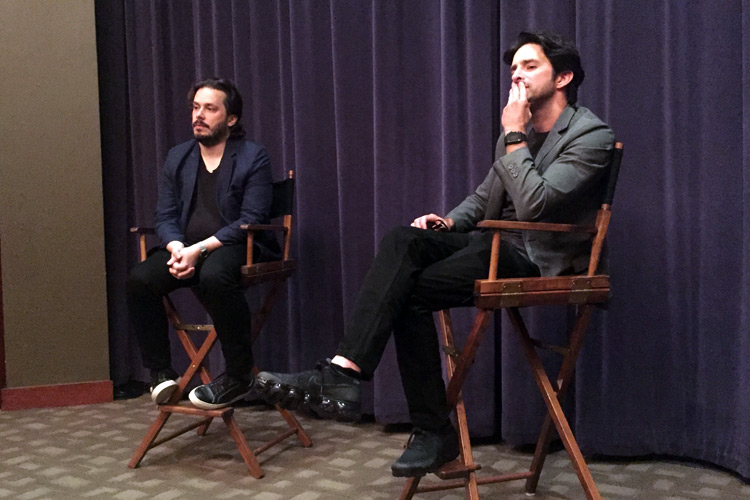The following questions and answers are excerpted from a conversation that followed the NBR screening of Baby Driver.
How did you translate the stage direction into the performance? And what was the planning process to stage the car scenes to work with the actors?
Edgar Wright: When I gave the script to the actors, they had all of the music as well, so they could read the script with the right music playing. The next thing was storyboarding the action sequences and cutting those storyboards to the music to see what generally worked. It’s not the case like in most films where you just shoot a lot of cool things with fourteen cameras and then try lots of different songs. It’s different in that we had the song, which made the process both more complicated and freeing in terms of anything we shot having to work into the song structure. Then with storyboards, we brought in the actual physics and have to think about it in terms of choreography and location.
“If you approach something with precision, then there’s always something that throws everything off”
How did you work the Baby and Debora story into the progression of the car chases?
Wright: The progression of the car chases is that you start with the romantic notion of being a getaway driver. Ansel Elgort’s character is almost fooling himself into thinking he’s not a criminal and the first heist goes off like clockwork where nobody gets hurt. There’s not any collateral damage. With each successive heist, the consequences become more vivid and then it gets to a point where he has to extricate himself and that’s impossible. At the same time, an innocent relationship between him and Debora is building up and as an audience member you feel like this is cute but there’s black clouds on the horizon. The idea was to have Baby starting in a different world and then there’s a point where his two worlds collide.
How did you practically bring music on set to get the timing right? Did you rely heavily on play back like you would in a music video?
Wright: It’s different than a music video because in a music video you’re doing coverage. With this, we were playing the music back, but it worked in a number of different ways. If Ansel Elgort was the only one listening to the music and he’s the only one choreographed, then he’s the only one actually listening on set. He’s either got his ear phones plugged in to a playback device controlled by sound department or he’s wearing an earwig. In the scene in the dinner where he’s listening to the Beach Boys and Lily James is not, it made his performance slightly dreamier. In scenes where there was no dialogue, it would play out loud like the Harlem Shuffle scene where we had speakers all over. Then he’d go into the coffee shop and we’d switch channels to record the barista’s dialogue. So it was very complicated. In the cases with the car and gun scenes, we’d break it down into counts like choreography. For the bulk of it though, the music is playing.
How did you keep the tone grounded throughout the film?
Wright: It was probably from the script because while it has funny bits in it, for me the humor is setting you up for a fall. One of the good things about Kevin Spacey, Jamie Foxx, and John Hamm is that they can all be funny as well as terrifying. I liked the idea that it could go any way at any moment. Sometimes there’s a funny bit then a dead body, so I wanted to keep people slightly on edge in not expecting a direction for a character to go.
In a movie like this that is so well designed and choreographed, was there still a moment for discovery in the editing process?
Wright: If you approach something with precision, then there’s always something that throws everything off. An example of a happy accident was the second car chase I had done all of the storyboards and showed my cinematographer and he said “You haven’t got enough song for the action.” On the last day of shooting, I had Ansel Elgort goes into the car and replay the song to give us more music for the chase. I think it works well and solidifies the character.

